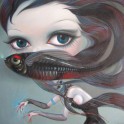2017年5月27日(土)
One school that's trying to get it right
One school that's trying to get it right is the in Oakland, Calif., located in an otherwise bland industrial area out near the airport. In Lighthouse's maker space, , one student has just accidentally glue-gunned a large piece of wood to a table. Oops. Another student is working on a drone prototype made of Styrofoam. There's also a disco ball made with LED LED Street Light and paper cups. Seventh-grader Blanca Hernandez is working on a cardboard doll house with lights and furniture. "You can make whatever you want, and no boundaries — only, like, not LED Panel Light setting things on fire," she explains. "No boundaries on your creativity." Well, the other boundary is that Lighthouse has worked hard to try to link its maker space when possible with what teachers are doing in the classroom. Tanya Kryukova teaches physics here. Her hands-on projects, with help from the maker lab, include a mini electric house project to explore circuits, and cars made from mousetraps and rubber bands. She says she's always asking: How can we apply physics concepts to make these projects work better? "I think for me, the true learning comes in when a learner is curious and asks questions," Kryukova says. "They're trying to find out and they say, 'Oh, so it's like this. This is how it goes.' " But there is a tension. That gets us to the second challenge: As maker space expands into more schools, there are fears it will be corporatized — and watered-down with demands for tests, Common Core alignment, accountability and structure. That's disturbing to a movement that's been marked by largely unstructured creativity and exploration. There's that nagging question: Will a pedagogic approach to "making" suck the joy and soul out of it? Thirteen-year-old Khalil Roberson's take: Remember to keep it a little weird, free-form and fun. "This is just a spring coil," he tells me. "So I'm going to solder right now. I just love making, exploring different things." I ask him: What's the coolest thing you've made in here so far? "I'd have to say the hovercraft. Of Styrofoam, rubber bands and glue gun." Another solution to that challenge, at least for LED Street Light , is to make tinkering, at times, a more deliberate, human-centered activity. For example, one assignment requires students to design and build something for a friend or the wider community to use. Lighthouse's creativity lab director, Aaron Vanderwerff, says this requires students to interview the prospective user of the project "and think about what they are interested in." Then, they "prototype different possible solutions to a problem. Then you can get feedback from your user before you create your final product or process." While they're using the lingo of tech (Focus on the user! Human-centered design!), these students aren't wealthy kids from Silicon Valley. Lighthouse's population is nearly 90 percent African-American and Latino and 84 percent lower-income who are eligible for free and reduced lunch. "Every kid at this school knows what making is and knows what maker fairs are," says Lighthouse's creativity lab teacher, Amy Dobras. "I think this school does a really good job of really 'browning' the maker movement in a lot of ways." And that gets to the third big challenge for maker education: making it not just the purview mostly of middle- and upper-middle-class white kids and white teachers whose schools can afford laser cutters, drones or 3-D printers.
| コメント(0件) | コメント欄はユーザー登録者のみに公開されます |
